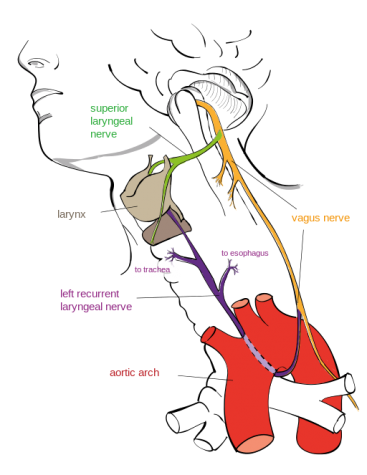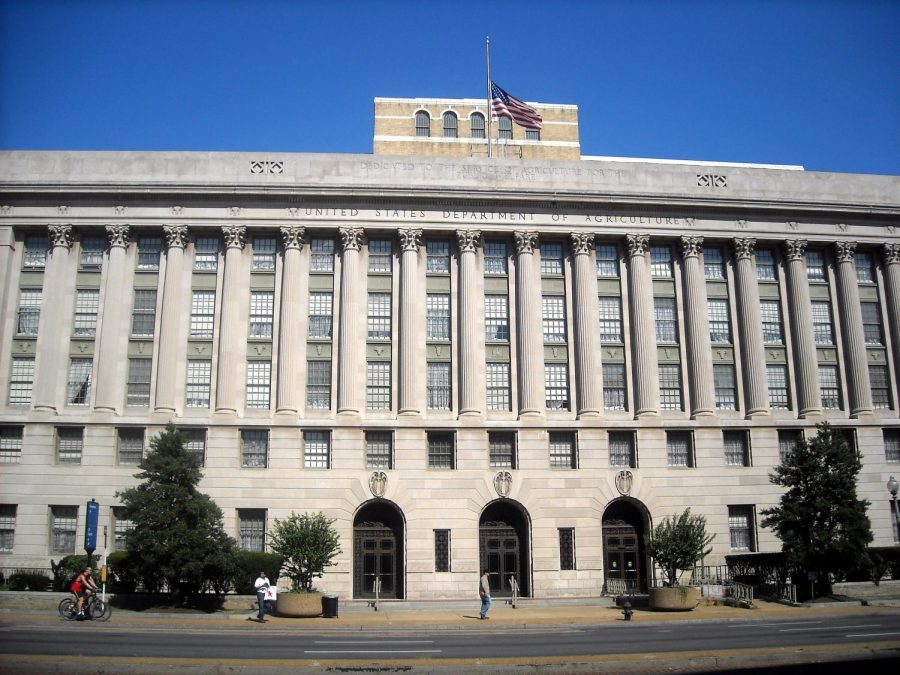The Federal Bureaucracy: imperfect, but indispensible
The recurrent laryngeal nerve, which supplies motor function to the larynx, is one of the strangest fixtures of human anatomy. Instead of connecting the brain directly to the larynx, it first takes an unnecessary detour around the heart and a major artery. Is the Laryngeal Nerve wasteful? Counter-intuitive? Yes, and yes. However, without it, we would be unable to breathe or speak.
The Federal Bureaucracy is structured like a complex organ system. Many different organs (agencies) coordinate with each other, address countless regulatory functions, and otherwise enable the larger organism (the government) to continue functioning. To the chagrin of many fiscal conservatives, this oftentimes occurs in unconventional, and sometimes counter-productive, ways.

There are even, in effect, vestigial agencies, which seem to no longer serve a functional purpose, and can eventually become enough of a nuisance that they must be cut out.
However, the Federal Bureaucracy as a whole is quintessential to the effectiveness of our democracy, and rearranging the delicate system, if done carelessly, could risk its structural integrity.
On first look, the Trump Administration’s recently unveiled proposal to reorganize the bureaucracy does not appear to damage this integrity directly, as it avoids cutting largely popular programs from the budget. Instead, it serves as an attempt to consolidate the roles of the federal agencies so that each manages only what can be directly linked to its respective purpose.
Nutritional assistance programs currently managed by the Department of Agriculture will be moved into the Department of Health and Human Services. The USDA’s rural housing loan guarantee program will also be moved, in this case, into the Department of Housing and Urban Development. Additionally, the Department of Labor and Education will be merged into a single agency, the Department of Education and the Workforce.
While this may seem like a noble attempt to bring order to the chaos that is the Federal Bureaucracy, in reality, it is a partisan smear campaign against programs which have previously benefited from bipartisan support. In a sense, Trump is creating a roadmap for de-regulators to pinpoint and cut programs, which are currently protected under layers of bureaucracy, or by the bipartisan approval of the agency which manages them.
For example, the Department of Education is a famously controversial agency which many prominent conservatives, such as Senator Ron Paul and Energy Secretary Rick Perry, support cutting from the government altogether.
The Department of Labor, on the other hand, is less limited by partisan divisions, as many of the blue-collar constituents of Republicans rely on its programs for job security and safety standards. This allows Labor to maintain educational programs such as the Job Corps, which offers free-of-charge education and vocational training to young people, and the Employment and Training Administration, both of which could be subject to cuts in an agency like Education, a pet peeve of many prominent conservatives.
By merging the agencies as the Trump Administration plans to do, initiatives in the current Department of Labor will no longer remain relatively immune from the cuts which have plagued the persecuted Department of Education. Such cuts would likely result in staff purges similar to those that have occurred in the State Department and EPA, risking the jobs of Labor’s 17,500 employees, many of whom live in Northern Virginia.
Trump also appears to be priming aid programs in non-partisan agencies such as Agriculture and Defense for cutting, by moving them into much more contentious agencies such as Housing and Urban Development and Health and Human Services. As a final pejorative blow, the administration also plans to change the agency’s name to replace “Human Services,” with “Public Welfare,” a phrase that carries a derogatory connotation in conservative politics. By using that phrase, they aim to eliminate this agency by having the Republican-majority Congress vote to get rid of it.
Unfortunately, due to the way out political system functions, programs receive congressional funds not based on their value, but their visibility in the partisan limelight. Taking advantage of this, Trump plans to politicize the few remaining programs that maintain a positive non-partisan reputation, by moving them into controversial agencies.
This will clog the laryngeal nerve of our government, the bureaucracy, and reduce its functionality to the point where it will lose its role as an enforcer and stabilizer of our democratic institutions.
The right-wing hardliners in the Trump Administration would argue that the free-market could provide a functional alternative to much of what the bureaucracy offers, which is why they are so intent on delegitimizing it. While they are correct that the bureaucracy is imperfect, they are wrong that there is a viable alternative.
As the old cliché goes, democracy is the worst system of government except all the others have been tried. In a democracy, the bureaucracy is the worst system of policy management, except privatization has been tried.
Without a strong and reliable bureaucracy, safety nets are shredded, essential services become premium, and progress is sidelined for profit. In the process, the public descends into apathy and irreverence as dysfunction and corruption become synonymous with government.
This is why the federal bureaucracy, and its foundational pillars, the federal agencies, must remain untrammeled by administrative incompetence.

Colter Adams is the Lasso's Senior Political Junkie, and Managing Editor. He is also a part-time musician and a massive film buff.








